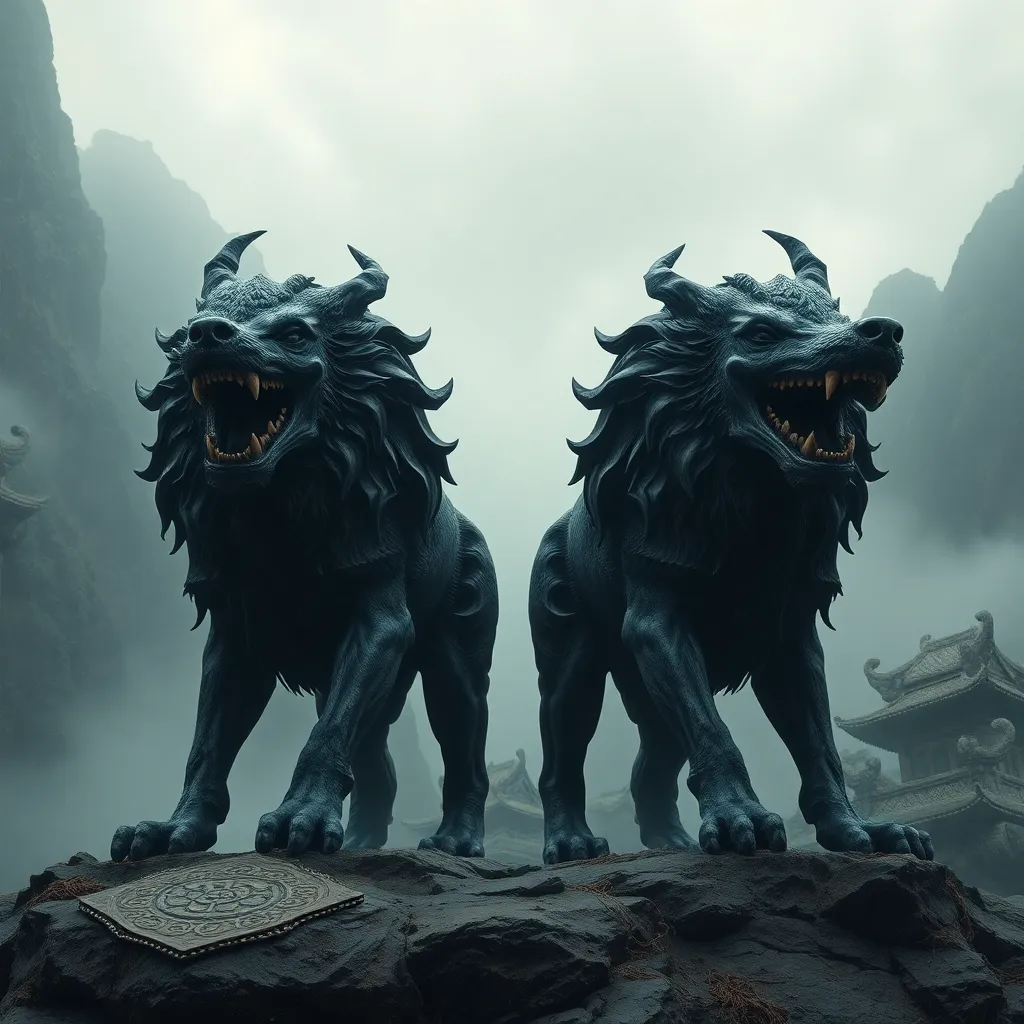Cerberus Across Cultures: Exploring the Myth’s Presence in Global Folklore
I. Introduction
Cerberus, the fearsome three-headed dog of Greek mythology, is a creature that has captivated the imaginations of many throughout history. Originating from ancient Greece, Cerberus is often depicted as a fierce guardian of the Underworld, preventing the living from entering and the dead from escaping. The significance of exploring Cerberus in a global context lies in its widespread influence and appearance in various cultures, where similar figures serve analogous roles. This article will delve into the origins of Cerberus, its adaptations in Roman culture, parallels in world mythologies, representations in art and literature, contemporary portrayals, and its enduring symbolism.
II. The Origins of Cerberus in Greek Mythology
Cerberus is most famously described as a monstrous dog with three heads, a serpent’s tail, and a mane of snakes. This fearsome creature is known as the guardian of Hades, the Greek Underworld, where it plays a crucial role in maintaining the boundaries between the living and the dead.
The primary duty of Cerberus is to prevent the souls of the deceased from escaping and to keep the living from entering without permission. Notable myths involving Cerberus include his capture by Hercules, one of the Twelve Labors, where the hero was tasked with bringing the beast to the surface as proof of his strength and courage. This labor not only showcased Hercules’ heroism but also highlighted Cerberus’ formidable nature, as he had to wrestle the creature from the depths of the Underworld.
III. Cerberus in Roman Adaptations
The influence of Greek mythology on Roman culture is profound, and Cerberus is no exception. In Roman texts, Cerberus is often portrayed similarly to his Greek counterpart but with some variations that reflect Roman values and beliefs.
- Variations in Portrayal: Roman adaptations sometimes emphasize Cerberus’ role as a more benevolent guardian, focusing on his protective nature rather than purely his ferocity.
- Funerary Practices: In Roman funerary practices, Cerberus often symbolized the transition to the afterlife, appearing in tomb inscriptions and art as a reminder of mortality and the protection of the deceased’s journey.
IV. Parallel Figures in World Mythologies
Cerberus is not alone in the realm of mythological guardians. Many other cultures have analogous figures that serve similar roles as protectors of the Underworld or thresholds between life and death.
- Fenrir (Norse Mythology): A monstrous wolf prophesied to kill Odin during Ragnarok, Fenrir embodies chaos and destruction, serving as a guardian figure in a different context.
- Anubis (Egyptian Mythology): The jackal-headed god Anubis oversees the dead and is associated with mummification and the afterlife, serving as a protective figure for souls.
This comparative analysis reveals the common human themes surrounding death and the afterlife across cultures, with guardians like Cerberus embodying both fear and protection.
V. Cerberus in Art and Literature
The image of Cerberus has been immortalized in various forms of art and literature throughout history. Ancient sculptures often depict Cerberus in a menacing pose, emphasizing his role as the formidable guardian of the Underworld.
- Ancient Art: Cerberus is frequently shown in pottery and reliefs, illustrating scenes of mythological significance, such as his encounters with heroes.
- Influence on Literature: Writers such as Dante Alighieri in “The Divine Comedy” and John Milton in “Paradise Lost” have drawn inspiration from Cerberus, using him to explore themes of sin, punishment, and the afterlife.
- Modern Interpretations: In contemporary narratives, Cerberus has been reimagined in various ways, often as a symbol of loyalty, terror, or the struggle against death.
VI. Cerberus in Contemporary Media
In modern films, television shows, and video games, Cerberus continues to be a prominent figure, showcasing the myth’s adaptability to contemporary storytelling.
- Film and Television: Movies such as “Harry Potter and the Sorcerer’s Stone” feature a three-headed dog inspired by Cerberus, turning the creature into a whimsical yet dangerous guardian.
- Video Games: In games like “God of War,” Cerberus appears as a formidable enemy, reflecting the original myth’s themes of struggle and heroism.
These modern representations often reinterpret Cerberus’ role, shifting from a mere guardian to a complex character that embodies various psychological and societal themes.
VII. The Symbolism of Cerberus Across Cultures
Cerberus symbolizes a range of themes that resonate across cultures, making him an enduring figure in mythology.
- Themes of Death and Protection: Cerberus represents the duality of death as both a fearsome end and a protective passage into the afterlife.
- Metaphor for Fears: The creature can also be seen as a metaphor for psychological fears and societal anxieties regarding mortality and the unknown.
This legacy of Cerberus continues to provoke thought and discussion about the human condition, our fears, and our beliefs about life and death.
VIII. Conclusion
Cerberus is a significant figure that transcends cultural boundaries, embodying themes of protection, fear, and the afterlife. From its origins in Greek mythology to its adaptations in Roman culture, parallel figures in world mythologies, and representations in art and contemporary media, Cerberus persists as a powerful symbol in human storytelling.
The universality of myths like Cerberus reflects fundamental human concerns, making the study of such figures crucial for understanding cultural narratives and their relevance in society today. Ultimately, Cerberus serves as a reminder of our collective fears, our fascination with the afterlife, and the ways in which mythology continues to shape our understanding of the world.



